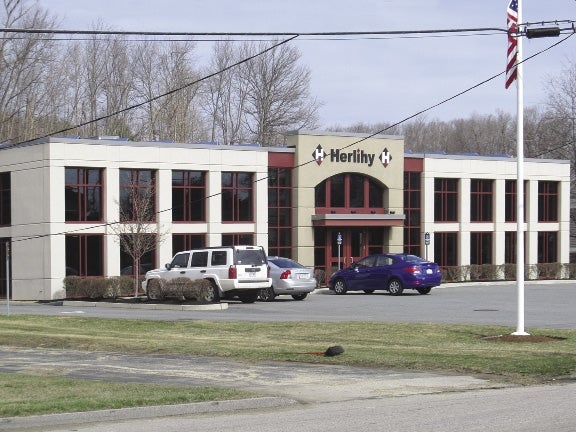Jump-starting the green energy industry in the United States was a goal of the Obama Administration when it took office in 2009, and federal incentives designed to meet that goal have buoyed green energy companies in Central Massachusetts and beyond.
But recent changes and reductions to those incentive programs are causing business prospects to turn, which local experts say is a natural evolution of a maturing industry.
“I see the market taking a more sophisticated shift, in terms of the business opportunities and the players that are able to come to commercialization,” said Vincent DeVito, executive director of the Institute for Energy and Sustainability in Worcester.
DeVito is a corporate attorney who focuses on the energy and technology sectors. He said the floodgates opened for green energy projects when Congress approved the American Recovery and Reinvestment Act of 2009, which included incentives that made it more feasible for companies and organizations to invest in renewable energy projects.
But a key program, known as the 1603 Treasury Program, last year reverted to an older format that provided investment tax credits to participants.
The program was revised from its initial format to give government grants to those that don’t benefit from tax credits — such as nonprofits — to help encourage more investment during the Great Recession.
DeVito said this change means the market will now rely on companies with larger budgets for investment, while smaller clients that may have only invested because of the incentive will hold off.
“There is still a viable, strong market for investors. It’s just the investors need to be larger scale (and) more sophisticated in terms of being able to bring real dollars to the table,” DeVito said.
Architects of federal incentive programs intended for this to happen, DeVito said. Incentives were not designed for long-term use — only to help the green energy industry gain traction.
It worked, said Jim Dumas, co-owner of Solect Energy in Hopkinton. The 1603 program, in particular, helped Solect secure customers early, otherwise it could have taken it much longer to grow.
Dumas agreed with DeVito’s assertion that the new green energy customer is a bigger company with more money to spend. “It’s changed the upfront profiling we do in lead generation and marketing,” Dumas said.
Fewer Customers?
Whether changing federal incentives will result in fewer customers is doubtful, according to Dumas.
As 1603 was set to revert to a tax credit format, there was a spike in customers who signed on for projects in 2012. Another program that allows participants to reduce their taxable income through renewable energy investments is being reduced gradually each year and some customers are signing on while the savings are still relatively high.
In the end, Dumas said, the corporate customer will remain.
“On one hand, it’s disappointing that (the former 1603 program) went away because it did shut down some good, solid owners of renewables,” he said.
But when large corporations are your customers, Dumas said a company can gain name recognition that was once elusive.
Despite changes at the federal level, Massachusetts is still one of the best places for green business, Dumas said.
That’s because the Bay State has been aggressive about designing its own green energy incentive programs, and many are still in full swing. They include the Solarize Massachusetts program, which makes purchasing solar energy systems more affordable through a group-purchasing system, and the solar renewable energy credit (SREC) program that allows users to generate income by selling SRECs back to the power grid.
Some former cash incentive and rebate programs have expired or are being phased out, but like federal incentives, they weren’t designed to be permanent, said Carrie Cullen Hitt, senior vice president for state affairs at the Solar Energy Industries Association in Washington, D.C. Hitt said changing incentives aren’t taking anyone by surprise in Massachusetts.
“I think the industry is prepared for it here. It’s been a rational and transparent path forward,” Hitt said.
There is some discussion about the future of state incentive programs, however. For example, some cities and towns are looking to increase property taxes on renewable energy systems, which could deter future investment, Hitt said. Other states are taking similar second looks at programs that have been in place for a few years, according to Hitt.
“The policy makers are saying ‘Do we need to (continue) all of these things? Or do we need to adjust them?’ ” Hitt said.
Aside from changing incentive programs, another consideration for the green energy industry is the potential impact of sequestration. With Congress unable to reach a deal to avoid across-the-board cuts to federal budgets, the fallout has a trickle-down effect, particularly in research and development.
Hitt said the results of sequestration are not yet known, but it poses risk and uncertainty in Massachusetts, a state that is home to a sizeable number of green energy companies — approximately 200, she said.
The role government plays in supplying green energy customers to the private sector is considerable, too. Many companies, like Framingham-based Ameresco, work almost entirely with public entities.
Tightening federal budgets make Mike Ortolano, owner of Absolute Green Energy in Worcester, glad he’s stuck to servicing the private sector. He has considered moving into the public sector, but prefers the spending agility private companies have for green energy projects.
”I like projects that start and end in one year,” Ortolano said. “That’s almost impossible to do in the public sector.”
Read more

